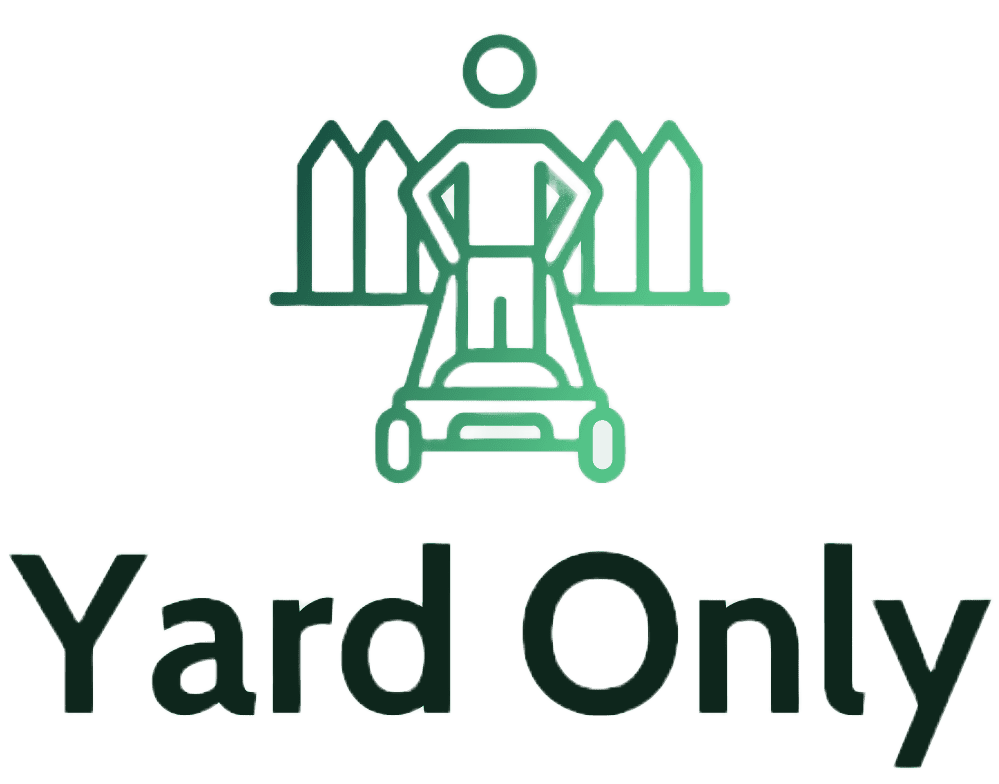Every year during the months of late spring and summer, the long grasses generate extremely sharp and pointed seeds. They also have tiny barbs on them. They are usually 1-2 centimeter in height and because of their pointed ends, it can easily penetrate the skin and lets gravity push it further. Is grass seed bad for dogs? let’s find out!
These innocent-looking grass seeds are unequivocally bad for dogs and cats as they get inside their fur and embed in their outer skin. Due to their structure, it is very difficult to remove them if not treated on time they can cause extreme pain to the dogs and in the worst cases also result in internal health issues.
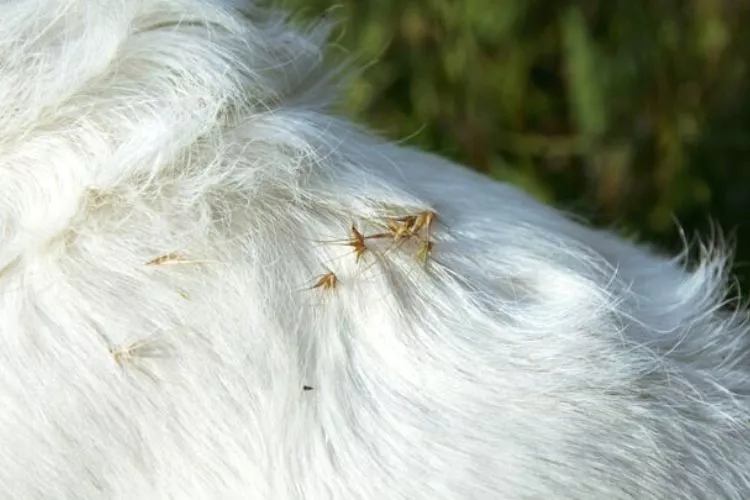
Is Grass Seed Bad For Dogs?
Dogs love to play and run outdoors, especially over long grasses. But little do these innocent souls know that the grass seed can be extremely dangerous to them. Grass seed with their sharp and pointed barbs are coiled up with fur and further penetrates the outer skin of the dogs. The continuous movements of these animals let gravity push further the grass seed.
This way they get hurt in several areas like feet, ears, eyes, and armpits. And with time if they are not removed it will cause immense pain to the dogs. In rare cases, it also gets inside the nose, mouth, genitals, and other sensitive parts of the dog.
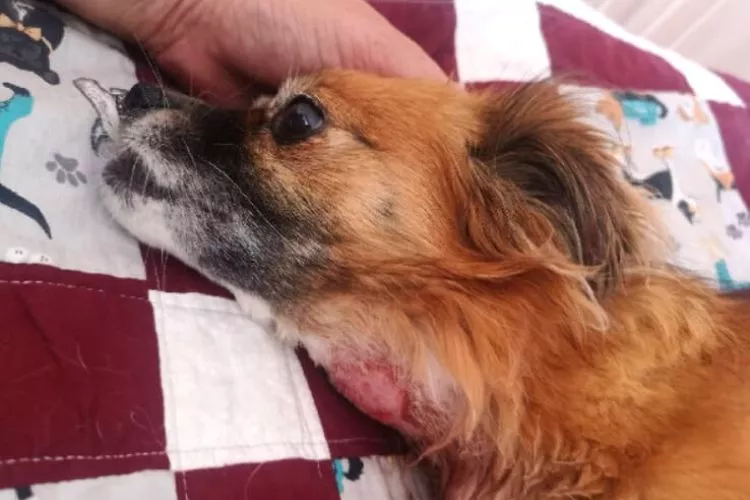
Potential health complications that can arise from grass seed ingestion
These grass seeds if left untreated cause extreme pain to the dogs. They irritate the skin and if left untreated they will lead to heaps of internal health issues. These grass seeds carry bacteria that, when penetrating the skin, cause infection in the dogs.
If they are not removed from the skin, these bacteria would spread entire body as the seeds move the entire internal body. In some cases, it also leads to surgery to remove them and the application of antibiotics and antifungals to prevent further infection. The location where these would penetrate would cause skin breakage that leads to redness and swelling.
If they get inside the feet, it would cause lameness and discomfort while walking. And if you observe minutely, they would frequently lick their feet and there would be inflammation and pain in those areas. If the grass seed gets inside the ears, they will repeatedly shake their head and scratch their ears. It will cause an infection in the ear canal.
If they get inside the eyes, it is very painful and would lead to corneal ulceration; if it is deeply penetrated, it would also lead to loss of eyesight. In rare cases, if it gets inside the mouth or nose, it would lead to extreme salivation, sneezing, or even licking.
If an infection is caused, it would lead to a bad smell and bloody discharge from the nose or blood coming from saliva. Further, if it causes a lung infection, it is also life-threatening.
How To Prevent grass seed-related injuries in dogs?
Now that we know is grass seed bad for dogs or not, to prevent serious grass seed injuries, it is always advised to look minutely for grass seed ingestion once the dog is inside. Still, if you cannot remove all the grass seeds, it is advised to immediately take the dog to the vet and remove it so there should not be any bacterial infection.
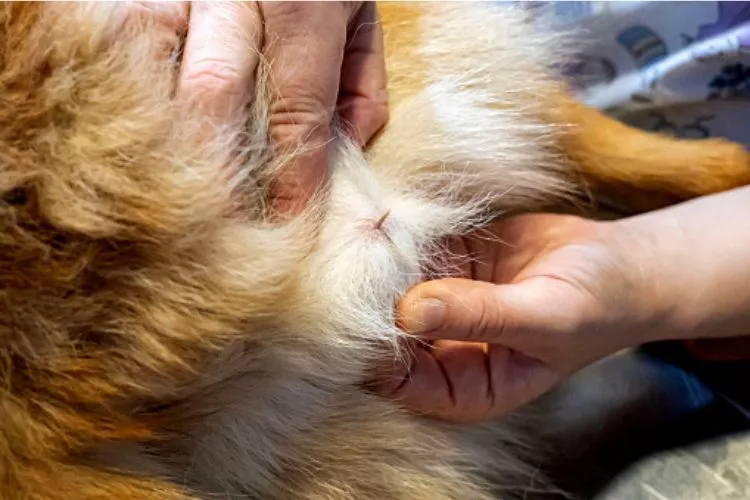
1. Tips to keep away the dogs from places where grass seed is present
It is always advised not to take the dog out in places with long grasses with grass seed. By doing this, you can rest assured of grass seed infection. Usually, some many parks and playfields are usually mown regularly so that the grass remains short.
These places are safe for your pet dog. Once you get home daily after a walk with your dog, look for any seeds attached to their fur to avoid further penetration to their skin.
2. How do you properly groom and inspect dogs to minimize the risk of grass seed-related injuries?
Furthermore, your dog needs to be well-groomed and should have a shorter coat, and be well-trimmed hence the grass seed won’t trap into their body. Serious attention should be given to their feet, ears, and under the tummy.
It is always advised to check the areas between the pads of their feet and surrounding their ears where the grass seed is frequently attached.
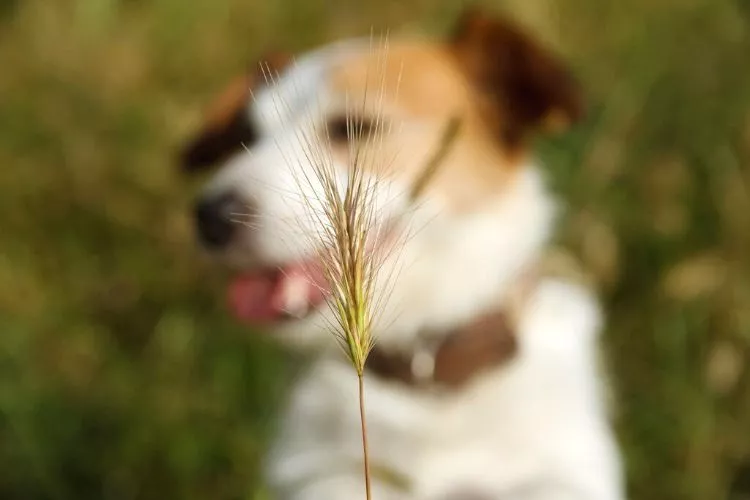
If you observe that the grass seed is already embedded in their skin, then it is strictly advised not to delay further and immediately take the dog to the vet to get it removed through medical help. Always remember, that if you take early action, it would always prevent your dog from pain and internal damage through bacterial infection.
So apart from avoiding places with long grass, it is always best to keep your dog well-trimmed regularly and do proper cleaning and grooming by a professional. Moreover, professional groomers can also identify early symptoms so that necessary action can be taken.
Alternatives to traditional grass seed
There are many alternatives to traditional grass seeds that should not be harmful to dogs.
1. Alternative options for maintaining a lawn that is less risky for dogs
If there is a dog in your house and you would love to maintain a lawn, it is always suggested to use synthetic turf or artificial grass. These alternative grasses don’t require very high maintenance and are very long-lasting.
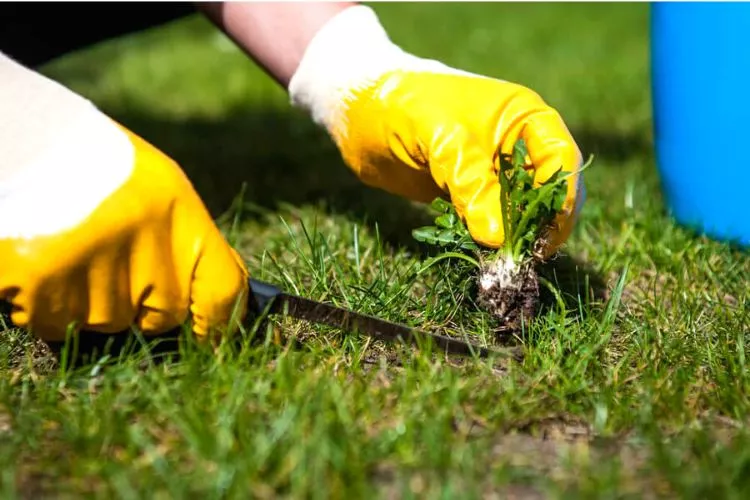
They can also withstand the pressure created by the dogs from playing and running. There are also live grass options that are pet friendly and won’t cause any harm to the dogs. They are buffalo grass, Kentucky bluegrass, tall fescue, St. Augustine grass, and Zoysia grass. Wood chips are another alternative to grass seeds that are not harmful to dogs.
2. How to properly maintain these alternative options to keep them safe for dogs?
Artificial grass requires very low maintenance yet is long-lasting. Make sure deodorizer is applied to absorb the pet’s urine smell. Only clean the dog waste with water and your lawn is perfectly cleaned. Buffalo grass is low-water drought-tolerant grass that requires, low maintenance and grows almost three inches tall.
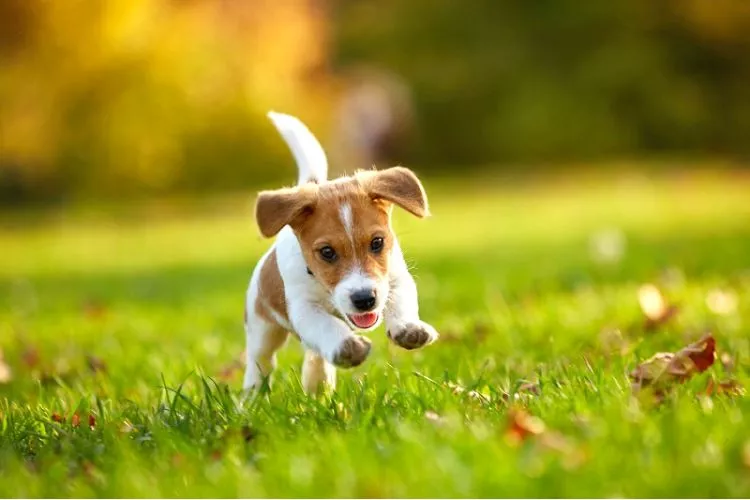
Kentucky grass is best for cold climates and this grass can reseed itself. All you need is to water properly because these grasses grow very quickly. Tall fescue is a slow grower hence they are best to fill patches. They can reseed themselves and hence need watering regularly.
St. Augustine grass has deep roots but needs urine cleaned immediately to retain its longevity. Zoysia grass has deep roots and is long-lasting and must be watered regularly.
You May Also Find Useful If You Have A Lawn: Small Holes In The Lawn Overnight | How To kill Orchard Grass In Your Lawn
frequently asked questions (fAQs)
What happens if a dog eats grass seed?
It is usually very rare that dogs eat grass seed. But if it does get inside, in the early stages it would cause extreme salivation and licking. With further infection, there will be a bad smell from saliva and blood coming out. At this stage, if not treated it will lead to a lung infection that is even life-threatening for the dog.
How long until grass seed is safe for dogs?
Usually, once the grass is about three inches tall, it is safe for the dogs to roam around. It usually takes around two weeks to a month for the new grass to reach this height. So it is better not to take your out in places with new grass.
What grass seed is safe for dogs?
It is preferred to use non-GMO and organic seeds, especially those with soft lawn grass. Perennial Ryegrass and Centipede Grass is safe for grass that is considered safe for dogs to roam around. Pennington Smart Seed Sun is a safe way as grass seed for dogs as they are completely natural.
What happens if a dog eats grass seed with fertilizer?
If the dog eats grass seeds treated with chemical fertilizers that are not pet-friendly, it would lead to fatal poisoning. In worst cases, it can even lead to seizures and tremors which is life-threatening for the dogs. So it is always advised to use pet-friendly fertilizers that won’t harm the dogs.
Conclusion:
If you have pet dogs at home treat them as your family member and take all necessary measures to give them a happy life. Hence it is always to keep them away from dangerous grass seeds that penetrate their skin and create huge health hazards.
Moreover, you need to regularly groom your dogs and clean them after every walk so that any grass seed attached to their skin would be removed immediately. Because though they look tiny but very dangerous and you need to be vigilant enough to remove them immediately.
Furthermore, it is always advised to use pet-friendly alternatives in your garden or backyard that would be extremely safe for your dog to run and play around.
